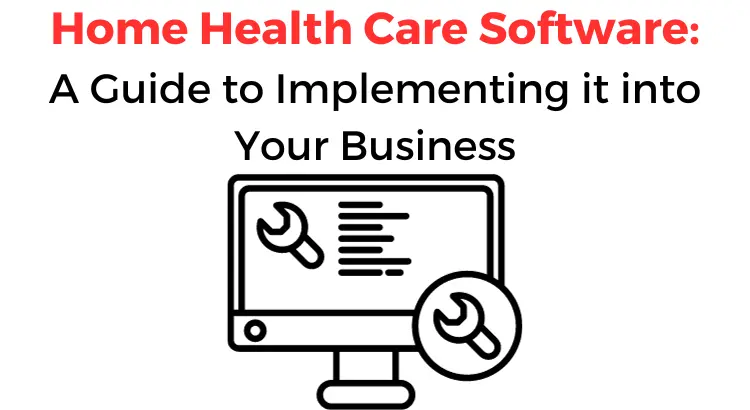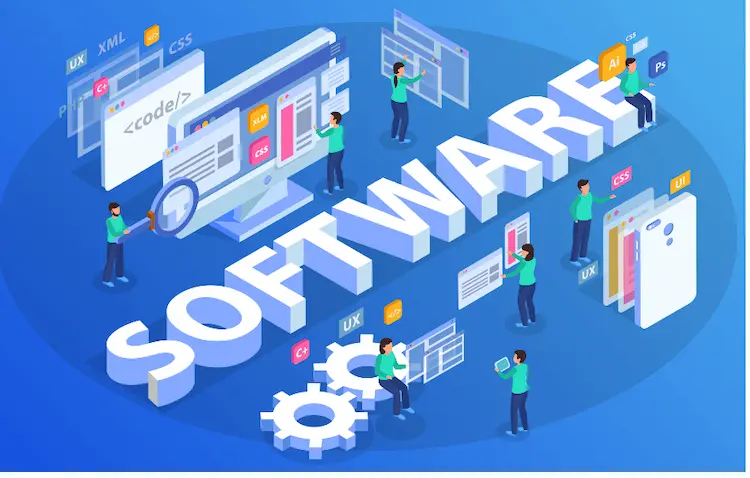The introduction of home health care software has instigated a deep-seated shift in how health care institutions manage their tasks and deliver unparalleled care to those requiring it.
With the rising call for customized care and the imperative for streamlined workflows, integrating a powerful home health care software solution can seamlessly optimize processes, foster efficient communication, and ultimately elevate patient outcomes.
This extensive guide will delve into the systematic approach of integrating Home Care Software Solutions into your business. This comprehensive resource will clearly understand the process, ensuring a seamless implementation.

Benefits of Home Health Care Software Solutions
Before diving into the implementation process, let’s first understand the benefits of adopting Home Care Software Solutions:
- Enhanced Efficiency: Home health care software automates various administrative tasks, such as scheduling, billing, and documentation, saving time and reducing errors.
- Improved Communication: With integrated communication features, software enables seamless communication between caregivers, patients, and other stakeholders, leading to better coordination and collaboration.
- Streamlined Documentation: Electronic health records (EHRs) provide a centralized platform for storing and accessing patient data, ensuring accurate and up-to-date information.
- Real-time Data and Analytics: Home health care software offers real-time insights and analytics, enabling agencies to monitor performance, identify trends, and make data-driven decisions.
- Compliance and Security: Software solutions comply with industry regulations, ensuring data security and privacy and reducing non-compliance risk.
Step-By-Step Guide to Implementing Home Health Care in Your Business

Step 1: Assess Your Needs and Goals
The first step in implementing Home Care Software Solutions is assessing your agency’s needs and goals. Consider the following aspects:
- Workflow Analysis: Analyze your current workflows and identify pain points, bottlenecks, and areas for improvement.
- Features and Functionality: Determine the essential features you require in a software solution, such as scheduling, billing, reporting, and telehealth capabilities.
- Integration Requirements: Evaluate the compatibility of the software with your existing systems, such as electronic medical records (EMRs) or payroll systems.
Step 2: Research and Select a Software Solution
After understanding your requirements comprehensively, embark on thorough research to pinpoint possible Home Care Software Solutions. Take into account the following factors when making your selection:
- Vendor Reputation: Research the vendor’s reputation, customer reviews, and industry experience to ensure reliability and customer satisfaction.
- Scalability: Assess whether the software can accommodate your agency’s growth and adapt to future needs.
- Training and Support: Evaluate the vendor’s training and support offerings to ensure a smooth transition and ongoing assistance.
- Demo and Trial: Request demos and trials to assess the software’s usability and functionality firsthand.
Step 3: Plan the Implementation Process
Implementing Home Care Software Solutions requires careful planning to ensure a successful transition. Create a detailed implementation plan that includes the following:
- Timeline: Define a timeframe for each implementation phase, considering factors such as data migration, staff training, and system testing.
- Data Migration: Develop a strategy for securely migrating existing patient data from legacy systems to the new software solution.
- Staff Training: Allocate sufficient time and resources for comprehensive staff training to ensure proper software utilization.
- Change Management: Prepare your team for the change by communicating the benefits and providing support throughout the transition.
Step 4: Execute the Implementation Plan
With a well-defined plan, it’s time to execute the Home Care Software Solutions implementation process. Follow these key steps:
- Data Migration: Transfer patient records, schedules, and other relevant data to the new software system, ensuring data integrity and security.
- System Configuration: Customize the software settings to align with your agency’s workflows and requirements, such as document templates, forms, and user permissions.
- Staff Training: Conduct comprehensive training sessions for all staff members to ensure they understand the software’s features and functionalities.
- Testing and Quality Assurance: Perform thorough testing of all aspects of the software, including data entry, scheduling, billing, and reporting, to identify and resolve any issues before going live.
Step 5: Monitor, Evaluate, and Optimize
After the Home Care Software Solutions implementation phase, it is crucial to continuously monitor and evaluate the software’s performance to optimize its usage and effectiveness. Consider the following practices:
- Ongoing Training and Support: Provide continuous training and support to ensure staff members stay updated with new features and best practices.
- Performance Metrics: Establish key performance indicators (KPIs) to measure the software’s impact on productivity, patient outcomes, and overall agency performance.
- User Feedback: Encourage feedback from caregivers and staff members to identify areas for improvement and address any usability concerns.
- Software Updates: Stay informed about updates and enhancements to take advantage of new features and improvements.
Conclusion on Home Health Care Software
Implementing Home Care Software Solutions can bring numerous benefits to your agency, including increased efficiency, improved communication, streamlined documentation, real-time data and analytics, compliance, and security.
Following the structured approach outlined in this guide, you can successfully integrate software into your business and maximize its potential. Remember to continuously monitor and evaluate the software’s performance to optimize its usage and drive better patient outcomes.